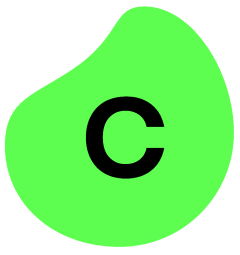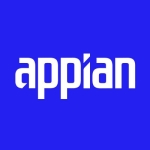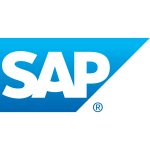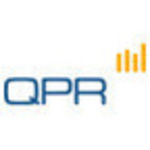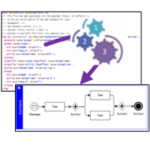I'm employed as a process mining expert.
I had prepared a proof of concept regarding segregation of duty. We used to have a lot of problems with the segregation of duties of SAP. The solutions that we use are ServiceNow, SAP, and one other. SAP has three systems, the first one is the main enterprise system, the second is the AP one, which is used for planning, and the third is the CRM system.
We also have something called DW, which is a data warehousing system. I was mostly in the security sphere, such as segregation of duties. There's no automatic role provisioning for the users who have joined the company or who are supposed to use SAP. We need to provide the accesses manually. We have to analyze the risk for each of the roles by using the GRC tool in SAP. It's an intensive manual process. There used to be a lot of problems while giving the rules, and while giving the rules, there are different markets. This company operates in 64 different countries, such as Uganda, Budapest, India, and Sri Lanka. These countries have different rules to define into it. For example, a user in the UK shouldn't have access to India. There is no possibility that we can trace it because there is no standard flow. There is no way you can pass through the data or event logs through this because there is no foolproof way of preparing a workflow.
In Celonis, you have something called a Petri net. Petri net is a token-based entry system, which helps you to find out the way how the event logs work. You have something called concurrence, which means if a PO or an invoice creation can happen at the same time, a process mining tool will not pick these two activities in their chronological order, because they might have happened at the same time. However, a token-based approach would have been better and more accurate. You would know that this particular event was passed, but this event is supposed to pass on the fourth or fifth phase of the tokenization. This was not the situation we had. The Petri net is complicated compared to a Google DMN flow. Google DMN flow is easier.
Celonis is one of the best solutions on the market. It offers you a lot of training materials and exposure to its ecosystem. Celonis is trying its best to prepare an ecosystem for it because, without an ecosystem, you will not be able to scale up.
I have noticed Celonis and Azure, as Infrastructure-as-a-service do not communicate well with each other. Since Celonis has recently acquired PAF they would try to synergize their operations with Microsoft tools. In the next couple of years, they should be more connected to the Microsoft ecosystems. In the long term, they should integrate more with SAP which is a partner of Microsoft. This would result in cost efficiencies.
I have been using Celonis for approximately two years.
Celonis was a stable solution. My company was trying to understand the power of Celonis. They wanted to create a second line of defense when audits fail because the segregation of duty team needs to ensure that the audits had never failed. Working in an alcoholic beverage company, they always wanted to make sure the solution never fails, or at least we're able to show them mitigation steps if one audit fails. This is the reason why they started the Celonis process mining as a proof of concept.
The scalability of Celonis is good. They have a lot of use cases and a lot of experience they have gained over a period of time. They have multiple models and ecosystems. Additionally, they have a lot of prebuilt apps or extractors, because they have done a lot of implementation of process mining. I have worked with Alteryx Designer, but Alteryx Designer's problem is it's not as simple as Celonis. Alteryx designer uses a complicated methodology that you have to do from the scratch. With Celonis, you don't need to do that. There are a lot of prebuilt extractors, and you can use those extractors if you know where to get the data from. For example, your data table in SAP gives you these PO header items.
I have not contacted support. However, I attended one of the technical seminars of Celonis. One of the academic counselors was there and I found them extremely knowledgeable.
I have used Camunda, Alteryx Designer, and Google DMN previously. The Camunda forms were cloud-based which was a benefit.
This is a cloud-based tool and it does not require an installation. You need to have a data extraction which could be a continuous process.
The implementation process time or difficulty depends on the complexity of the infrastructure. I haven't tested the integration on different scenarios.
Whenever I learn something, until I see any return on that investment, I would not invest in it. I have a serious plan of investing more time and resources in Celonis. I have found Celonis has a lot of new additions and it would be able to capture the markets very soon. The way the process improvements or process excellence is being looked at and the next progressive step for automation, I believe Celonis would play a vital role.
Celonis offers free learning possibilities. I am using the free version of Celonis.
I have evaluated many other tools.
I would recommend this solution to others.
I rate Celonis a nine out of ten.

